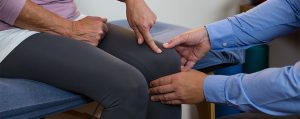Using 3D Printers for Affordable Prosthetic Solutions
As therapists, we often treat patients using our repertoire of exercises, but occasionally, we are presented with a mega challenge. It’s important at these times to think outside the box and challenge ourselves to tap into outside resources and use cutting-edge technologies available. I’m excited to share with you how I’ve been able to help one of my patients with the help of my community and advanced technology. Warning: This content contains sensitive imagery.
How Physical Therapy Can Help Patients Regain Mobility After Limb Loss
Nearly 2 million people in the United States live with a major limb loss as a result of illness or trauma.1
Although medical advances in the treatment of cardiovascular disease and diabetes has reduced the need for life-altering amputations, the overall number of those who require lower limb amputations is expected to continue to grow as a result of the growing prevalence of metabolic diseases.2 For those who have suffered limb loss, physical therapy is an important aspect in the restoration of mobility, care of amputee wounds, the management of post-operative pain and the prevention of further injury. Oftentimes those who have suffered limb loss are fitted with a prosthesis, which is an artificial body part. Outpatient physical therapy for post-operative care following limb loss consists of pre-prosthetic and post-prosthetic care. Learn more about prosthetic rehabilitation below.
